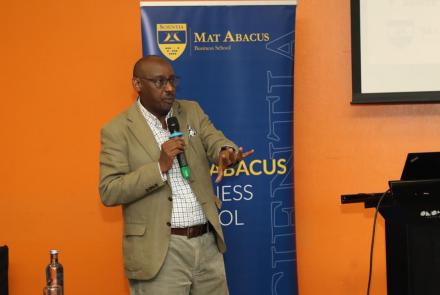By CPA Ronald Mutumba,
Managing Partner,
Mutumba Mukobe and Associates (Certified Public Accountants)
The first law on Insolvency in Uganda was passed by Parliament in 2011 through the enactment of the Insolvency Act (Act 14 of 2011) and later the Insolvency Regulations of 2013. Prior to the enactment of the Insolvency Act and Regulations, Uganda lacked any comprehensive legal framework aimed at addressing Corporate Insolvency.
Today, the Insolvency Act and Regulations provide corporate bodies that have declared insolvency with mechanisms aimed at rescuing the business from its inability to pay its debts. Some of these mechanisms are aimed at enabling the company to pay its debts in order to continue being operational, while others are aimed at enabling the company to pay its debts so it can safely be shut down or de-registered.
Insolvency is defined as bankruptcy under Section 2 of the Insolvency Act. The Insolvency Regulations 2013 further define insolvency to mean as the case may be;
- a bankrupt,
- a company in administration,
- or a company in liquidation.
Simply put, a company can be said to be insolvent if it has insufficient assets to discharge its debts and liabilities.
Persons allowed to practise insolvency in Uganda are known as insolvency practitioners. The Insolvency Act under Section 2 defines an insolvency practitioner to mean a person who is not an official receiver who is qualified to act as an Insolvency Practitioner within the meaning of section 203; which provides that “an Insolvency practitioner means a person who acts as:-
- a receiver,
- a provisional administrator,
- an administrator,
- a provisional liquidator,
- a liquidator,
- a proposed supervisor of a voluntary arrangement,
- a supervisor of a voluntary arrangement
- or a trustee in bankruptcy”.
For one to qualify to be an insolvency practitioner in Uganda, he or she should either be a lawyer, an accountant or a chartered secretary who is a registered member of the relevant professional body or is a registered member of any other professional body as the minister may prescribe per Section 204(1) of the Act. It is important to note that the Act prohibits certain classes of persons from becoming insolvency practitioners under subsection 2 of the provision.
The Act avails corporate bodies that are insolvent with mechanisms to handle their inability to pay their debts. These mechanisms include;
- Liquidation which is the process by which a company’s assets are liquidated and the company closed, or deregistered. Liquidation can be by the court order, voluntarily by the members of the company or the creditors and lastly it can be subject to the supervision of court.
- Provisional administration and Administration which is an insolvency process by which a company is placed under the control of an insolvency practitioner known as an administrator to enable them achieve objectives laid down by the statute.
- Receivership which is a remedy available to a secured creditor to recover amounts outstanding under a secured loan in the event that the company defaults on the loan. It is used as a debt collecting tool. A receiver is appointed under debenture deed that creates security over the Company assets or appointed by the court. The right to appoint a receiver must be clearly provided for under debenture deed.
Once a corporate body has been declared insolvent and any of the corporate rescue mechanisms employed, the insolvency practitioner will be expected to pay the company’s creditors in the order of hierarchy as provided under the Act.
Preferential debts provided for under section 12 of the Act shall have priority over all other debts. Preferential debts shall so far as the assets are insufficient to meet them, have priority over the claims of secured creditors in respect of assets.
Preferential debts as listed in the Act should be paid in the order of priority in which they are listed.
First to be paid shall be as below;
- Remuneration and expenses properly incurred by the liquidator or
trustee;
- Any receiver’s or provisional administrator’s indemnity and any remuneration and expenses properly incurred by any receiver, liquidator, provisional liquidator administrator, proposed supervisor or supervisor; and
- The reasonable costs of any person who petitioned court for a liquidation or bankruptcy order, including the reasonable costs of any person appearing on the petition whose costs are allowed by the court.
After making the payments listed above next to be paid shall be;
- All wages or basic salary, wholly earned or earned in part by way of commission for four months;
- All amounts due in respect of any compensation or liability for compensation under the Worker’s Compensation Act, accrued before the commencement of the liquidation or bankruptcy, not exceeding the prescribed amount;
After paying the sums above, the liquidator shall then pay;
- The amount of any tax withheld and not paid over to the Uganda Revenue Authority for 12 months prior to the commencement of insolvency.
- Contributions payable under the National Social Security Fund Act.
After paying preferential debts, the liquidator or trustee shall apply the assets in satisfaction of all other claims. Debts by secured creditors will come second and claims by unsecured creditors will come third after the preferential debts.
These claims shall rank equally among themselves and shall be paid in full unless the assets are insufficient to meet them, in which case they abate in equal proportions.
Both secured and unsecured creditors will be required to deliver to the liquidator or trustee written notice of any debt secured by a charge over any asset, including particulars of the asset subject to the charge and the amount secured or unsecured; as soon as practicable after public notice has been given of the liquidation or bankruptcy.
In summary, the Insolvency Act and its attendant regulations aim at serving the interests of all stakeholders because the collapse of any company due to financial distress affects the entire range of stakeholders of the company.




